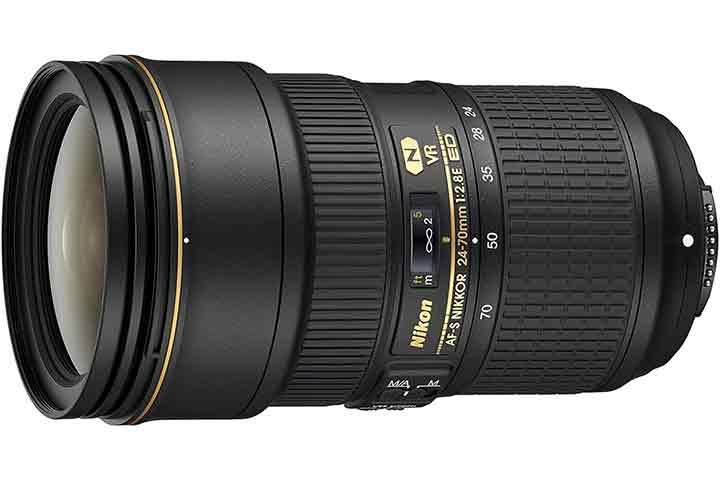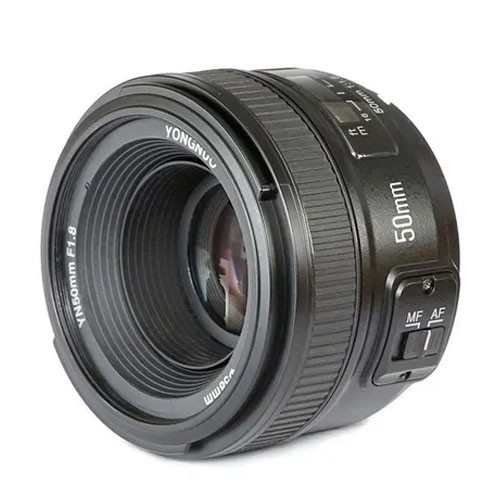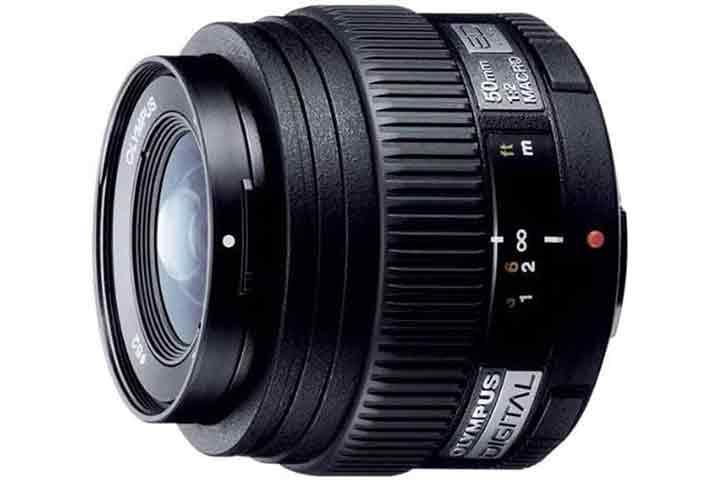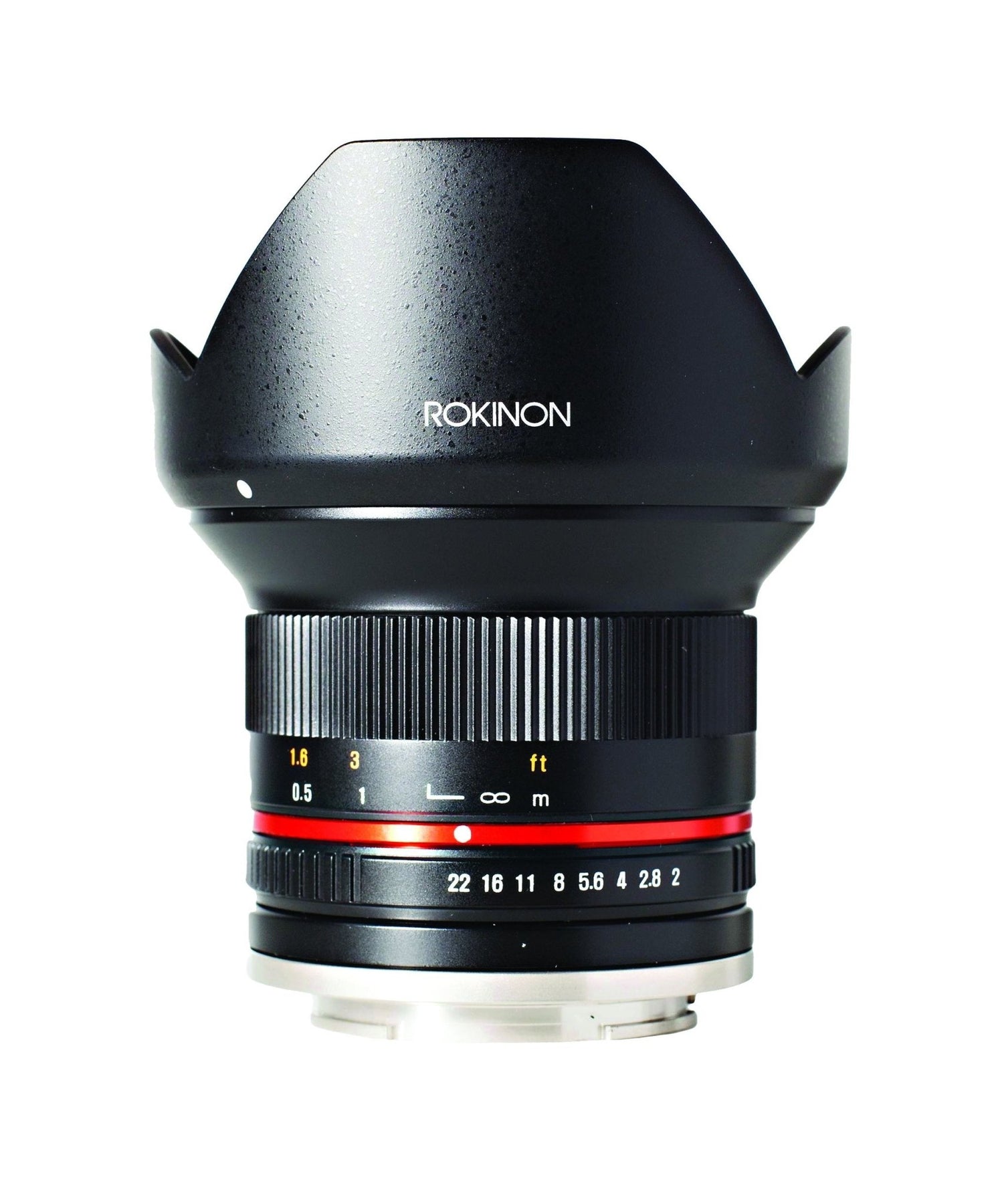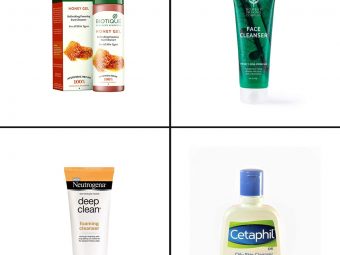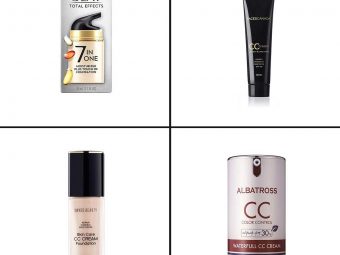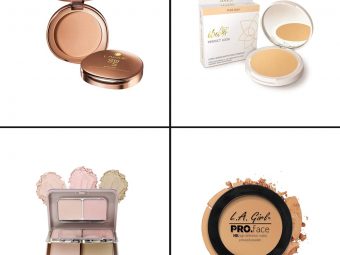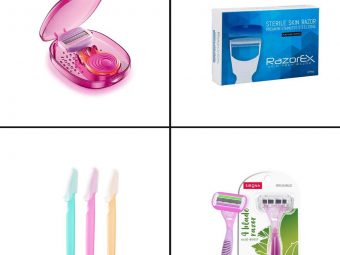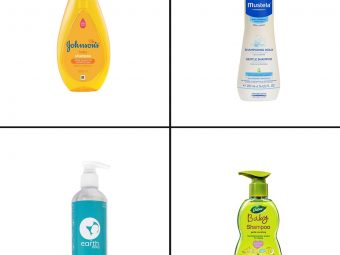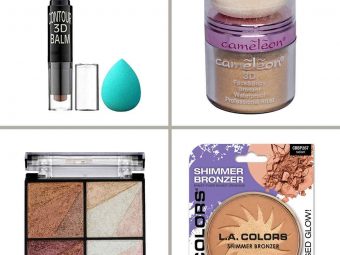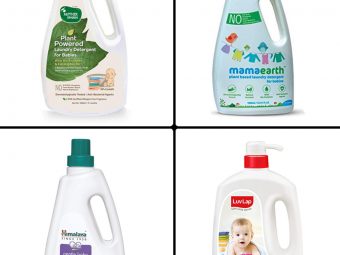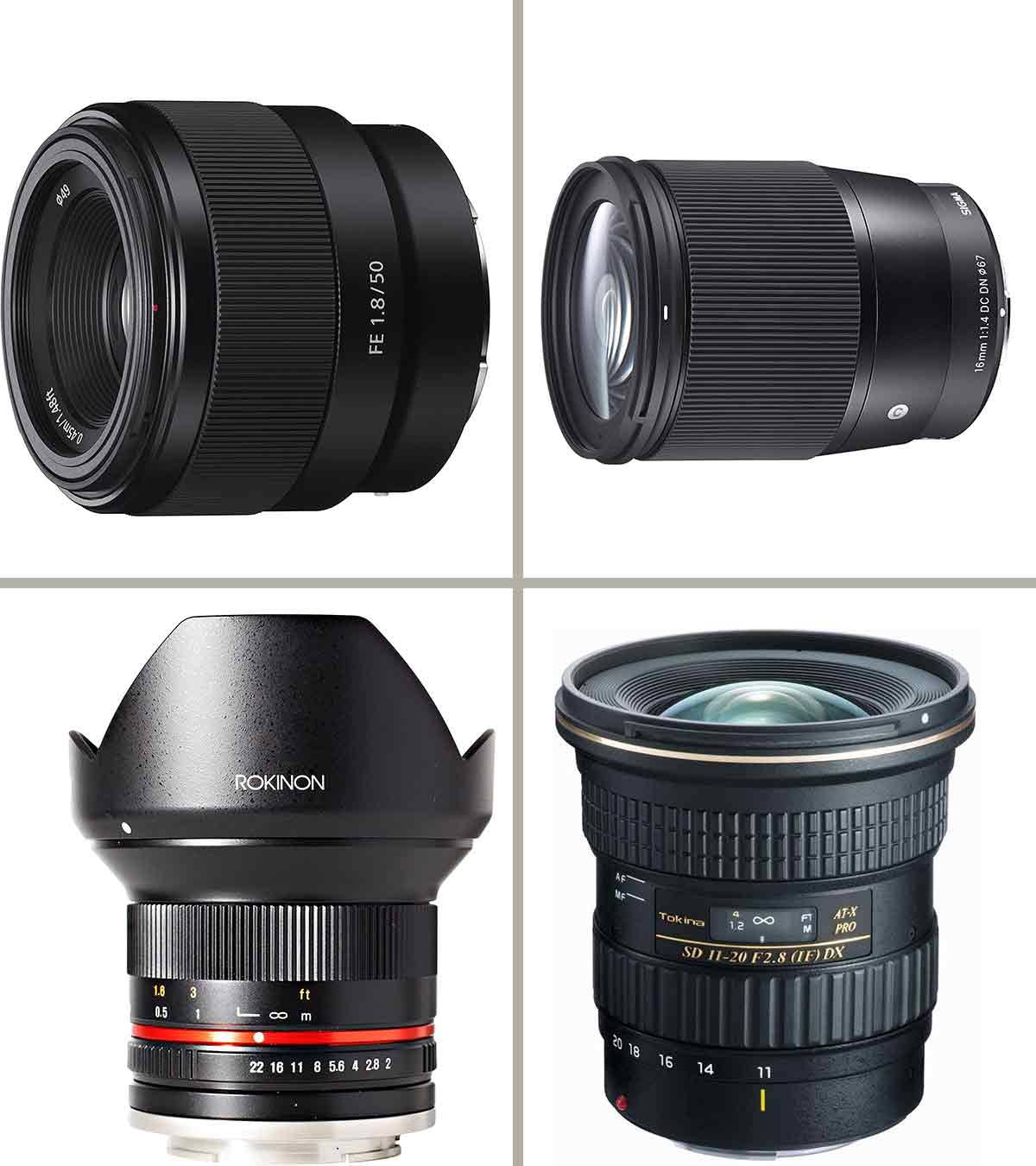
Image: MomJunction Design Team
If you have brought home a DSLR camera, soon you might realize that the kit lenses that accompany them are not suitable enough for low-light photography. The best lens for low-light photography is made with a higher aperture, the size the lens can open to capture light.
It’s important to know that you can choose from two types of lenses: prime lens and telephoto lens. Prime lenses are available at lower costs and have a fixed focal length. Telephoto lenses, on the other hand, have a long reach, thus letting your creativity come to life. In this post, we have listed some of the best lenses for low-light photography. The best-selling options listed here are lightweight, compact, and easy to clean, thus making them perfect for use just about anywhere.
Top Picks
11 Best Lenses For Low Light
1. Best Lightweight:Sony – FE 50mm F1.8 Standard Lens
This standard lens boasts an ultra-fast F/1.8 maximum aperture, so you never have to worry about poor picture quality in low light situations. It has a 7-blade circular aperture that helps you master the bokeh effect. With a 75 mm focal length and APS-C sensor, this is one of the best high-performance lenses for portrait photography. Its aspherical element helps to control spherical aberration and coma perfectly. With its double-glass configuration, it suppresses field curvature and distortion. It is also equipped with a 49 mm filter diameter and an E-mount. You can also check out this review video to learn from a tester’s experience.
Pros
- Impressive and precise autofocus
- Image stabilization
- Suitable for beginners and professionals alike
- Lightweight
Cons
- It may take some time to focus.
2. Best Compact:Canon EF-M 22 MM Compact System Lens
This tried-and-tested lens from Canon offers a moderate wide-angle lens that can be equalled to a 35 mm on a full-frame camera. Its in-built stepping motor ensures a fast and silent autofocus performance whenever you record a video. With a 7-blade circular aperture, it ensures a beautiful background, every single time. Its premium aspheric element and shining f/2.0 lens also ensure that it gives you the best quality while working in low light conditions. You can get as close as you want to the subject with the minimum focusing distance of 5.9 inches. Featuring a diagonal angle of view, a filter size of 43 mm, and an inner focusing system, you have nothing to worry about when it comes to the performance of this prime lens. If you need more convincing, feel free to take a look at this YouTuber’s video on the merits and demerits of the product.
Pros
- Lightweight and compact design
- Image stabilization
- Impressive depth of field
- High contrast
Cons
- The lens is not zoomable.
"The outstanding image quality and f2 aperture make this lens suitable for amateurs and experts alike, producing a nice bokeh. Since the lens cannot be zoomed, autofocus feels a bit slow at close range, yet it works well in various settings. I found it especially handy for vlogging."
 Quick tip
Quick tip3. Best With Multi-Layer Coating:Sigma Contemporary Lens
This 16 mm f/1.4 DC DN lens from Sigma stands apart. It has a large aperture of F1.4, made specifically for mirrorless cameras and for low-light photography as it creates a depth of field. The design of this lens makes use of aspherical glass elements and low dispersion to control color fringing and for sharpness and clarity. With a multi-layer special coating, it helps to suppress flare and promote greater contrast and color fidelity. If you want a detailed review of the product, make sure to take a look at this video.
Pros
- Compatible with many Canon models
- Wide angle lens
- Impressive contrast
- Autofocus
- Splash-proof
Cons
- The lens is not zoomable.
"Having used this lens in indoor and outdoor settings, I can vouch for its performance in low-light conditions. It takes some time to focus, but the overall performance has made it my preferred lens regardless of the kind of photos I want to click."
Sony – FE 50mm F1.8 Standard Lens Best Lightweight | Canon EF-M 22 MM Compact System Lens Best Compact | Sigma Contemporary Lens Best With Multi-Layer Coating | |
|---|---|---|---|
| Weight | - | 3.7 ounces | 14.3 ounces |
| Dimensions | - | 0.94 x 2.4 x 2.4 inches. | 5.91 x 3.94 x 4.33 inches. |
| Rating | |||
| Reviews | 5,257 | 1,004 | 770 |
| Price | $248 | $249.0 | $374 |
4. Best Easy-To-Clean:Nikon Vibration Reduction Zoom Lens
This low-light zoom lens is compatible with Nikon DSLR cameras and is a fantastic choice for low-light photography as it comes with an f/2.8 electromagnetic diaphragm aperture. Its superior image quality leaves room for zero distortion and that is made possible with its 24 to 70 mm focal length. This superior-quality lens also has 4 stops of Vibration Reduction when handheld, and when taking pictures in low light. With an in-built CPU and F mount, it also offers a minimum focus distance of 35 to 50 feet. For optical performance and precision like never before, you can count on the aspherical extra-low dispersion element of this Nikon lens. A versatile lens that provides shots at great speed, this lens is one of the best and a favorite among the reviewers. This AF-S NIKKOR 24-70mm f/2.8ED VR brings photography under low light to life.
Pros
- Non-stick glass
- Easy to clean
- Image stabilization technology
- Electromagnetic diaphragm
- Wide open lens
Cons
- Slightly heavy
"Whether I'm photographing events or landscapes, this lens helps me get clear shots every time. The VR is satisfying and improves image quality, even in low light or when taking handheld photos. Although a little heavy for covert street photography, it's versatile."
 Quick tip
Quick tip5. Best Multi-Coated Lens:Yongnuo YN50mm F/1.8 Lens
This low-light shooting lens supports autofocus and manual focus functions. A brilliant addition to the EOS 18-55 mm lens kit, it offers a swift and wide aperture for low-light conditions and helps produce sharper images. It is compatible with a host of cameras, is 2 inches in length, provides 0.15 magnification, 46° angle of view and accepts 52 mm filters. With a maximum focal length of 55 mm, this top-tier low-light lens also supports full-frame and APS-C format cameras.
Pros
- Supports many shooting modes
- Large F/1.8 aperture
- Multi-coated lens
- Quick aperture
- 45 m focussing distance
Cons
- Some may find it noisy
"I've been using this 50mm F1.8 lens for some time, and I think it's a decent option for amateurs. The picture quality is superb in both manual and automatic modes. It performs well in good lighting for still life or portrait photography. However, its picture quality is also noteworthy in low light."
6. Best Internal Focus:Tokina Lens For Canon EF
This cutting-edge low-light performance lens from Tokina features a f/2.8 to f/22. P-MO aperture range and glass molded aspherical elements that provide sharpness and brightness, and is equipped with 3 SD ultra-low dispersion. It comes with a one-touch focus clutch, and a 9-blade diaphragm and is compatible with the Canon EF. At 17.5 -32mm, the focal length of this lens makes it a well-suited low-light photography lens. Its minimum and maximum focal length is set at 11 and 20 mm, respectively.
Pros
- Image stabilization technology
- Lightweight and compact lens
- Multi-layer lens coating
- Internal focus
Cons
- It may not be compatible with Sony and Nikon mounts.
"I find this one brilliant for preventing aberrations in low light. Although a little heavy, it's worth it. Also, the lens performs well indoors and outdoors and is especially effective with crop sensor cameras."
 Quick fact
Quick fact7. Best Dust-Proof:Oshiro Ultra-Macro Lens For Nikon
This prime lens allows for an adjustable magnification range that can go from 0.1x to 2x. You can switch the magnification ratio in seconds without the need of a converter, and can quickly change to macro scenarios. Said to be the world’s first 2:1 prime manual focus manual lens, it is compatible with full-frame sensors and APS-C sensors. This low-light compatible lens also has 9 lens elements in 7 groups. And with its ultra-nano multi-coating anti-reflection glass, it offers durability, exquisite sharpness and clear colors. With 14 aperture blades, it helps in reducing flaring and ghosting and creates an incredible depth of view.
Pros
- 60 mm focal length
- Moisture-proof seal
- Dust-proof seal
- F/2.8 maximum aperture
Cons
- Full manual lens
"This lens is a good option for those new to macro photography as it produces crisp, stunning photographs. I love the clarity and precise color rendering, but I would suggest considering substitute lighting, particularly for super close-ups. I am pretty satisfied with its optical performance!"
8. Best For Rough Terrains:Olympus Macro ED Lens
Ideal for professionals, this time-tested lens can withstand the rigidity of constant use and rough terrains. This 50mm f/2.0 macro lens offers a maximum magnification ratio of 0.52x along with a 9.45-inch minimum focusing distance. With its extra low dispersion glass element, you can rest assured of spectacular image quality and top-notch resolution with great contrast facilitated by reduced chromatic aberrations. Its 50 mm range is equivalent to 100 mm in traditional 35 mm photography. The lens construction stands at 11 elements in 10 groups and offers a 24° angle of view. With 7 blades and 52 mm filter size, this lens won’t let you down.
Pros
- f/22 minimum aperture
- 45 inches closest focussing distance
- Sheds water droplets
- Compatible with Micro Four Thirds
Cons
- Some may find it slightly heavy
"The pictures I've taken using the Zuiko lens look so realistic! It's also versatile–doubling as a macro and sharp short telephoto lens. Hence, I would recommend it to all fellow DSLR owners."
9. Best Impressive Wide Angle:Samyang Wide Angle Lens For Fujifilm
This lens has a maximum and minimum focal length of 12 millimeters. It accepts 67 filters, and focuses to 0.2 mm. With this lens, you can be assured of a wide-angle view that spans 98.9°. You can also be guaranteed fast f/2.0 maximum aperture benefits that promote working in conditions with low light conditions. This ultra-efficient lens has an increased light transmission and lesser internal reflections all made possible by the Nano Coating System. It also uses 12 high-aperture lenses for low light. Designed purposely for mirrorless cameras, it has an f/2.0 large aperture that ensures that you capture shallow depth fields.
Pros
- Accepts 67 filters
- Reduced internal reflections
- Lightweight
- Impressive wide angle
Cons
- Manual focus only
"This lens has become my favorite for my photographic adventures. It is rugged and does a good job of controlling distortion at a wide angle. I got some decent images, even though color matching with other lenses was a little tricky. I would recommend it for its superb picture quality!"
10. Best For Bokeh Effect:Meike Manual Focus Lens
This lens is compatible with all Sony E mount cameras. A wide-angle lens for low light, it is suitable for both portrait and landscape photography, as well as product photography. It has a fixed focal length of 35 mm, and maximum aperture of 1.4 to 16 that ensures that your photograph comes out well with its high-intensity lighting. A manual lens, you need to enable the ‘M mode’ in the camera setting. It has a great APS-C angle and 5 groups in 8 elements that ensure that you get sharp and distinct pictures.
Pros
- Multi-layered lens
- Wide angle lens
- Works with all Sony E-mount cameras
- Good for bokeh effect
Cons
- May not autofocus
"I am impressed with the design of this lens, helping me produce a beautiful bokeh with a clear central sharpness. That's why it is also great for portraits in dim lighting. It's a manual lens, so getting the focus right needs some practice, but the results are worth it."
11. Best Nano Coating Technology:Rokinon Wide Angle Fixed Lens
This lens has a great wide angle view that gives the best results. It is also compact and lightweight, so you need not worry about moving it around. The cutting-edge Nano Coating system ensures that you get the best contrast and highest light transmission. With this lens, you don’t need to worry about taking pictures in the night, or at dark places, its f/2.0 max aperture ensures this. Providing low chromatic aberration for heightened sharpness and internal focus that ensures zero lengthening or rotation of the front lens, this lens is one of the best.
Pros
- Accepts front filters
- 3 extra low dispersion elements
- Minimum focus distance of 7.9’’
- Compatible with a wide range of cameras
- Suitable for videography
Cons
- The lens may not be zoomable.
"The design of this lens looks and feels tough. Due to its excellent depth of field and fine details, I used it for estate photography. However, in some lighting conditions, I noticed chromatic aberration; this can be corrected by adjusting the F stop. Overall, I love how well it works in low light!"
Now that we’ve looked at the 11 best lenses for low light, here’s a quick buying guide to help you choose one for yourself.
How To Choose The Right Lens For Low Light?
Consider the following factors when choosing the best lens for low light.
1. Purpose
Lenses vary in their strengths and weaknesses. So, you’d need to consider what you intend to primarily use your purchased lens for. Some are ideal for everyday shooting and travel, others for taking stylized pictures. The moment you understand what you want to use your lens for, you become closer to getting your desired lens.
2. Compatibility
These lenses vary in compatibility. Before getting one, you need to consider your camera and if it is compatible with this lens. Getting a lens that is not compatible with your camera will simply render your lens useless. Ensure that it is compatible with the mount type too.
3. Aperture
Every lens has a small hole inside. However, the holes vary in size. The larger the hole, the better it is for more light to come in and to make your pictures brighter and sharper in dark places. So, before getting your lens, you have to consider this.
4. Prime or zoom lens
If you decide to get a prime lens, that means you intend to put in more brightness into your shots, and correct mistakes in the shots easily. If you decide that you want to always get close to your subject of photography, you will need a zoom lens.
Frequently Asked Questions
1. Is a 50mm lens good for low-light photography?
Yes, a 50mm lens has a wide aperture that allows more light to enter the camera, enabling you to shoot great pictures even in environments with low lighting.
2. Should I start with a prime lens or a zoom lens?
A prime lens may be a more manageable and affordable option for beginners. They are lightweight, have a fixed focal length that doesn’t need adjusting, and are helpful in reducing camera noise and shaking. Zoom lenses, on the other hand, may be expensive and complicated for beginners.
3. How do I take sharp photos in low light?
You can take the following steps to shoot sharp photos in low light.
- Lower the shutter speed to allow more light into the camera.
- Use the camera’s flash.
- Alter the ISO setting to increase the sensor’s sensitivity to light.
The Bottom Line
If you are a photography enthusiast and are looking for ways to experiment with low-light photography using a DSLR, you will need the right lenses. Low-light lenses are specially designed to open wide enough to capture enough light. To avoid limitations while clicking such pictures, it is important to pick a lens that is lightweight, easy to maintain, and stabilizes your image well, as the Nikon Vibration Reduction Zoom Lens does. Also, look for lenses like the Canon EF-M 22 MM Compact System Lens, compatible with different cameras, or the Sigma Contemporary Lens that supports filters to enhance your photographs. However, you might want to avoid lenses that do not have a dust-proof seal, are not easily zoomable, and are heavy. We hope our list of the best lenses for low light can help you understand the available options and features.
Recommended Articles
Why Trust MomJunction?
Wedetso Chirhah aims to use his knowledge of various industry-leading and innovative products to help his audience with well-researched product reviews. He follows a thorough process to help readers pick out trusted products best suited for their needs. In this article on the best lenses for low light pictures, he listed the best-selling ones after reviewing multiple products, their features, and pros and cons. The article also includes a buying guide section that will make your task of picking the perfect product effortless.







